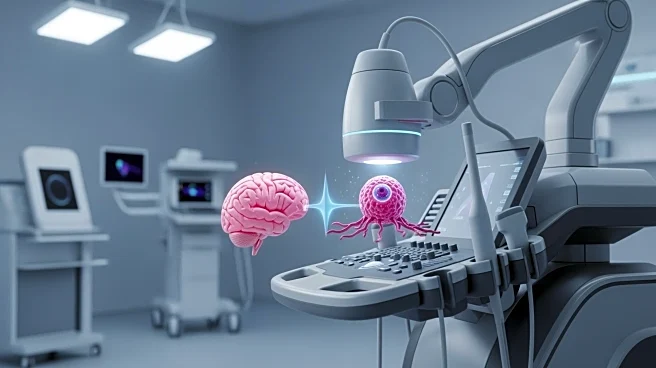What's Happening?
A recent study published in Nature Medicine has introduced a novel approach to understanding how different organs age using Magnetic Resonance Imaging-based Biological Age Gaps (MRIBAGs). Researchers have
developed seven MRIBAGs for the brain, heart, liver, spleen, kidney, adipose tissue, and pancreas. These age clocks aim to predict disease, mortality, and outcomes in Alzheimer's disease trials by analyzing molecular correlates, genetics, and disease prediction models. The study utilized data from large cohorts like the UK Biobank to derive these age-prediction models, which were evaluated using various statistical methods. The findings suggest that organs age at different rates, which could explain the varying susceptibility to diseases among individuals.
Why It's Important?
The development of MRIBAGs is significant as it offers a potential tool for precision medicine, allowing for earlier interventions and tailored prevention strategies. By understanding the aging process of individual organs, healthcare providers can better predict and manage conditions such as hypertension, diabetes, and Alzheimer's disease. This research could lead to more effective clinical trials by pre-stratifying participants based on their organ aging profiles, thereby reducing variability and improving the accuracy of trial outcomes. The study also highlights potential drug-repurposing opportunities, which could lead to new treatments for age-related diseases.
What's Next?
Further research is needed to validate the reliability and generalizability of MRIBAGs across diverse populations. Longitudinal studies could help establish these age clocks as standard tools in clinical practice, potentially transforming how diseases are predicted and managed. The study's findings may prompt healthcare systems to integrate MRIBAGs into routine MRI scans, enhancing the precision of disease prevention and treatment strategies. Additionally, the identification of druggable genes offers a pathway for developing new therapeutic interventions, although these findings require further exploration and validation.
Beyond the Headlines
The implications of MRIBAGs extend beyond immediate clinical applications. Ethically, the ability to predict organ aging raises questions about privacy and the potential for discrimination based on biological age. Culturally, this research may shift societal perceptions of aging, emphasizing the importance of organ health over chronological age. Legally, the integration of MRIBAGs into healthcare practices could necessitate new regulations to ensure equitable access and prevent misuse of age-related data.











